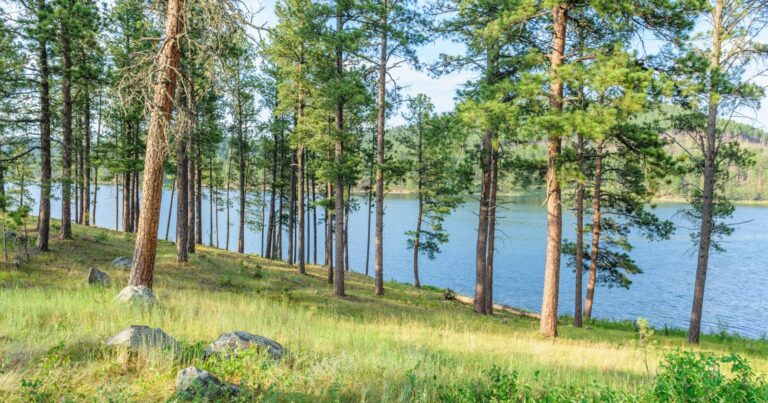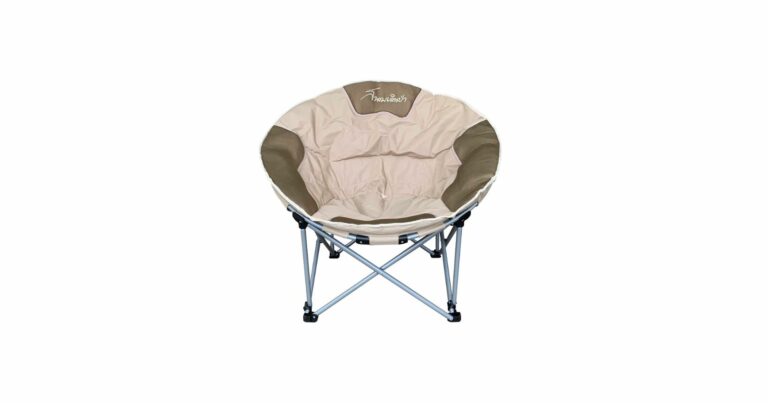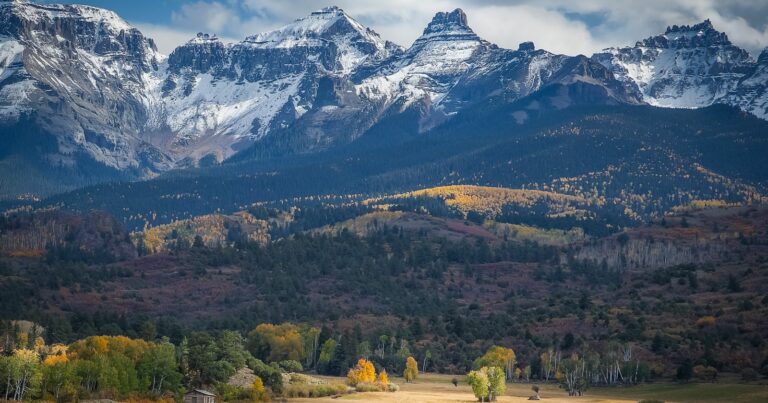Can You Really Camp for Free in the US?
Planning a camping trip but don’t want to break the bank on campsite fees? You’re not alone. With rising costs and squeezed budgets, many campers are looking for ways to cut expenses while still enjoying time outdoors. The good news is there are options across the US to camp for free, if you know where to look.
National forests and BLM land offer a treasure trove of free campsites in stunning natural settings from coast to coast. States like Arizona, Utah, Colorado and Oregon have extensive public lands with camping options. Scope out spots in advance on sites like FreeCampsites.net to map out your route. Still, free doesn’t always mean easy. Remote areas require extra preparation and self-sufficiency.
Steer clear of prohibited areas like parks with amenities, airports, schools and military bases. With some savvy planning and flexibility, you can bed down under the stars while keeping cash in your wallet. Give free camping a shot and enjoy the perks of getting back to nature on a budget.
From deserts to mountains to beaches, claim your own little slice of paradise and make lasting memories without draining your accounts. This guide will walk you through how to find and prepare for free campsites around the US. Let’s hit the open road and embrace the freedom of camping off the grid!
Public Lands Offer Endless Free Camping Opportunities
Some of the best free camping is found on public lands managed by government agencies.
National Forests
National forests contain over 150,000 miles of trails and thousands of free camping spots. Each national forest has a mix of developed campgrounds (which charge a fee) and more primitive camping areas that are free. Camping rules can vary between different national forests, so check regulations with the local ranger district office.
Many national forests allow free backcountry camping anywhere, as long as you follow certain guidelines. Generally, you’ll need to stay a certain distance from trails, water sources or private property. backpackers can often set up tents wherever they choose during multi-day treks.
BLM Land
The Bureau of Land Management (BLM) oversees 245 million acres of public lands, primarily in the Western U.S. Much of this land is open for free camping. BLM land provides diverse options from deserts to mountains. As with national forests, some common-sense rules apply like being considerate of the environment and staying away from developed sites.
The Best States for Free Camping
Some states offer more free camping opportunities on public lands than others. Here are some of the top places to find free campsites:
- Arizona – Saguaro National Park, Apache-Sitgreaves National Forest
- Utah – Most BLM land, Fishlake National Forest
- New Mexico – Carlsbad Caverns National Park, Santa Fe National Forest
- Wyoming – Bridger-Teton National Forest, BLM land
- Colorado – Gunnison National Forest, White River National Forest
- California – Plumas National Forest, BLM land throughout the state
- Oregon – Deschutes National Forest, Umatilla National Forest
More Ways to Find Free Campsites
Public lands aren’t the only places to discover great free campsites. Here are a few more options:
State Parks
Many state parks reserve some drive-in camping spots as first come, first served. Arrive early to claim your space for free. State forest campgrounds also tend to be low cost or free.
Boondocking
Boondocking refers to camping outside of organized campgrounds, generally on public lands. Free sites for RVs/trailers can be found on BLM land and in national forests. Arrive early to get your pick of gorgeous spots.
Camp Host Programs
Some campgrounds offer free camping in exchange for a few hours per day of light work like cleaning or checking in guests. Inquire about camp host opportunities to earn your stay.
Use Free Campsite Finder Websites
Cataloging all the free camping across the US’s vast public lands would be nearly impossible. Luckily, some helpful websites do the work for you:
- FreeCampsites.net – Database of over 14,000 free camping locations. Can search and filter by location and amenities.
- Campendium – User-generated reviews and maps pinpoint free campsites across the US and Canada.
Avoid Prohibited Areas
When scouting free camping locations, be sure to avoid any prohibited areas:
- Developed campgrounds – Do not set up in established campsites unless you pay the fee.
- Parks with playgrounds, sports fields etc. – Camping is generally not allowed near these amenities.
- Private property – Always get permission from landowners before camping.
- Military bases, airports, schools – These areas strictly prohibit unauthorized camping.
By steering clear of off-limit areas, we can all preserve access to amazing free recreation spots on public lands. Follow leave no trace principles and don’t overstay limits on any one site.
Prep Your Vehicle and Gear for Free Camping
While free camping cuts costs, it does require some additional preparation:
Supplies
- Extra food, water and fuel since you can’t necessarily restock every day
- First aid kit, maps, emergency communications device
- Fire starting supplies and camp stove for cooking
- Flashlights, lanterns and headlamps with spare batteries
- Portable power station to charge devices
Vehicle
- High ground clearance for accessing remote sites
- All-terrain tires for gravel/dirt roads
- Emergency kit with shovel, traction boards, jumper cables
Sanitation
- Portable toilet or designated waste bags
- Biodegradable soap and trowel for burying waste 6-8 inches deep
- Hand sanitizer and disinfecting wipes
The key is being self-reliant with your food, water, power and waste disposal. Follow all regulations and practice minimum impact techniques. Reward yourself with incredible free camping surrounded by nature’s beauty.
Getting the Most from Free Camping on Public Lands
Venturing into free camping on public lands gifts you with natural splendor without draining your wallet. From deserts to forests to mountains, incredible scenery abounds. Follow these tips to make the most of your free camping adventures on national forests, BLM land and beyond.
Claim Your Free Spot Early
Arrive as early in the day as possible, especially in peak season. The most scenic sites with the best access go quickly in popular areas. Pack up camp the night before to pull out first thing. Scope out several potential areas in advance using maps and websites so you have backups ready if your first choice is full.
Pack a lunch to eat on the road so you don’t lose time driving to a free campsite. You want your pick of primo real estate, not the leftovers.
Explore Lesser-Known Areas
Iconic parks like Yellowstone and Yosemite fill up fast. Lesser-known and more remote public lands often have an abundance of free camping spots. Do your research to find forest service roads and trails leading to secret backcountry gems. Speaking with rangers can provide insight on overlooked camping areas.
Venture into off the beaten path locales during lower season when crowds thin. Enjoy having the natural wonders all to yourself.
Pack Smart for Self-Sufficiency
Free camping requires being fully self-reliant for up to 14 days or more in some areas. Carefully plan out supplies like:
- Water (1 gallon per person per day minimum)
- Food that won’t perish
- First aid kit, maps, emergency communication devices
- Tools, toilet paper, trowel for burying waste
Freeze water bottles to double as ice packs that keep food cold. Use multi-use collapsible containers to minimize trash. A portable solar shower lets you refresh without paying for amenities.
Follow All Regulations
Using free public lands comes with the responsibility to follow all posted regulations. This ensures we don’t lose access to these precious natural resources.
- Obtain permits if required
- Park vehicles and set up tents only in designated areas
- Practice leave no trace ethics like packing out all trash
- Observe camping length limits, typically 14 days max
- Extinguish fires completely
Pack extra trash bags and aim to leave your site better than you found it. Future free campers will thank you!
Come Prepared to Survive Off the Grid
While free camping allows you to unplug from society, also prepare for the realities of being remote:
- Bring maps and GPS to avoid getting lost if you hike or explore
- Fill up on gas whenever you pass a station
- Bring extra batteries, portable chargers to keep devices powered
- Have tire repair kits, jumper cables and other emergency gear
- Know basic vehicle maintenance like changing a spare
- Tell someone your plans and check-in schedule
The right mindset and precautions allow you to thrive off the grid. Reward yourself with stellar night skies and nature’s peace.
Discover the satisfaction of self-supported journeys. With strategic planning, you can road trip across the U.S. hopping between breathtaking free campsites. Slumber under the stars and create treasured memories without draining your wallet.
Locating Quality Free Campsites to Match Your Style
The range of terrain across the U.S. means free campsites come in all shapes and sizes. Whether you prefer hiking deep into the backcountry or pulling up at an easily accessible roadside site, options exist to match your camping style. Here is how to find quality free camping aligned with what you enjoy.
Backcountry Sites for Solitude Seekers
Escape the crowds and claim a scenic slice of nature all to yourself. Backcountry camping allows you to get far off the beaten path.
National Forests – Nearly all allow dispersed camping anywhere outside designated campgrounds. Permits are rarely needed.
National Parks – Parks like Yellowstone have backcountry sites available through a competitive permit lottery. Apply well in advance.
Long Distance Trails – Hike a section through forests and deserts along trails like the Appalachian or Pacific Crest Trail.
Arrive early to claim that perfect hidden site with phenomenal views. Backcountry camping is the epitome of free – just you and nature.
Lakeside for Water Lovers
Nothing beats sleeping beside the shore of a pristine alpine lake or coastal lagoon. Wake to shimmering waters outside your tent flap.
National Forests – Check regulations on camping near lakes. Many allow it outside established campgrounds.
BLM Land – Vast acreages with diverse terrain offer lakeside camping in spots like Oregon’s Christmas Valley.
State Park Lakes – Lakes have first come, first served non-reservable sites, like Sunset Cove in Utah.
Scope out lakes using topographic maps and satellite imagery. Ensure you’re far enough from shorelines to prevent erosion. Let the gentle lapping lull you to sleep.
Off the Beaten Path for Solitude Seekers
For the ultimate free camping, head down remote dirt roads to find places entirely your own. With lower crowds in areas like:
Islands of BLM Land – Utah and Arizona have scattered BLM parcels surrounded by other land ownerships but open for camping.
Forest Service Roads – Bumpy dirt roads lead deep into national forests with dispersed camping all around.
Coastlines – Parks like Oregon’s Samuel H. Boardman have rugged shoreline sites.
Limit stays to 14 days max to prevent overuse. The effort pays off for untouched camping without a neighbor in sight.
Easy Roadside for Quick Weekend Getaways
Can’t spend days venturing deep into the wilderness but still want to camp free? No problem – countless roadside sites provide quick access.
National Forests – Many have pull offs right beside paved roads with picnic tables, fire rings and vault toilets nearby.
BLM Land – Vast tracts right off highways like Arizona’s I-8 have unlimited boondocking.
State Park Overflow Areas – Non-reservable overflow sites are available first come, first served.
Enjoy quick weekend escapes without fighting traffic or crowds. Pull in, set up, then relax in beautiful roadside settings.
Whatever your camping personality, public lands provide the perfect free sites to match. Do your research to pinpoint spots delivering the perfect blend of relaxation and adventure.
Preparing Your Vehicle for Off-Grid Free Camping
Boondocking in remote settings means relying entirely on your vehicle. Breaking down miles from help makes for a rough trip. Get your rig free-camping ready with:
All Terrain or Mud Tires
Rugged tires provide traction on muddy, uneven roads. Features like reinforced sidewalls resist punctures from sharp rocks.
Increased Ground Clearance
Higher clearance keeps you from bottoming out on rutted roads. Consider a small lift kit for added protection.
Skid Plates
Metal skid plates shield vital components like fuel and oil tanks from bashing on rocks or stumps.
Off-Road Recovery Gear
Pack a shovel, traction boards, winch and recovery straps to escape if you get stuck. Know how to safely use gear.
GPS Navigation
Tracks your position far from cell service and helps locate free dispersed sites. Download maps offline ahead of time.
High Lift Jack
A rugged, manual jack designed for remote use lifts vehicles high enough to place boards or change tires.
Emergency Kit
Pack jumper cables, tire repair items, multi-tool, flashlights and other necessities for self-rescue.
Increased Fuel Capacity
Added fuel tanks extend your range between fill-ups in remote areas.
Insuring your vehicle is prepared for rugged conditions allows you to relax and enjoy your free camping oasis. Don’t let equipment failures ruin your experience in the wilderness.
Finding Free Campsites to Fit Your Budget
Camping for free requires dedication and effort. If you want to save money but aren’t ready to go all-in on completely free camping, there are some middle ground options:
Boondock Near Amenities
Stay in a free dispersed site on public land but drive into a nearby town periodically for supplies, showers, etc. Sites near tourist areas can offer the best of both worlds.
Partial Amenities Campgrounds
Look for low-cost campgrounds ($10-$15/night) that provide basics like potable water and flush toilets but less developed sites and facilities. State park campgrounds are a good option.
Camp Hosting
Some campgrounds offer a free site in exchange for around 20 hours/week of light work. Great way to lower costs and meet fellow travelers.
Off-Season Camping
Camp during shoulder seasons (Spring/Fall) to take advantage of lower rates before peak summer pricing hits. Sites are less crowded too.
** Membership Discounts**
Clubs like Passport America offer 50% discounts at participating RV parks and campgrounds. Use judiciously since full price camping earns points for more discounts.
With creativity, you can experience the best of camping without breaking the bank. Mix free days with some add-on comforts for a balanced getaway.
Frequently Asked Questions about Free Camping in the US
Is camping on public land really free?
Yes! National forests, BLM land, and other public lands provide free dispersed camping options outside of developed campgrounds in many areas. There are often limits of 14 days maximum on any one site. Always check local regulations.
What type of vehicle do I need for free camping?
Any vehicle can work, but higher clearance vehicles with all-terrain tires perform better on the rougher dirt roads and access roads often leading to free sites. Bring recovery gear in case you get stuck.
Do I need a camping permit on public lands?
Sometimes. National forests generally don’t require dispersed camping permits. But some national parks and wilderness areas require free permits to camp outside developed campgrounds – check regulations with the local land agency.
Where do people go to the bathroom when free camping?
Free, primitive campsites don’t have restroom facilities. You’ll need to either pack out waste in designated bags/containers or bury it 6-8 inches deep in a cat hole at least 200 feet from water and trails.
Is it safe for a woman to free camp alone?
Exercise standard safety precautions. Tell someone your planned route and check-in times. Camp near other groups when possible and don’t openly broadcast traveling solo. Consider a dog companion. Stay aware of your surroundings.
Conclusion
The thousands of acres of public lands across the U.S. offer virtually limitless free camping opportunities. With preparation and research, you can enjoy stunning natural settings that fit your camping style without draining your wallet.
Learn to become self-sufficient and tread lightly so these lands remain preserved for future generations. The memories made camping under the stars are priceless.
Embrace the freedom of the open road and escape to majestic mountains, sweeping deserts and beachside forests. Follow this guide to unlock a lifetime of free camping adventures that nourish the soul without costing a dime. Grab your tent, fill up your gas tank and hit the road to scenic free vistas awaiting your discovery.







